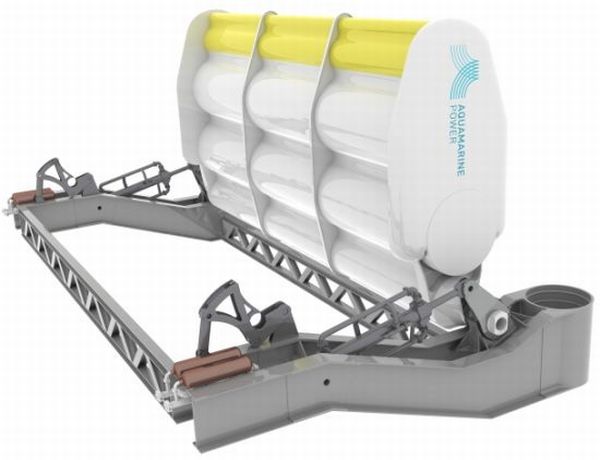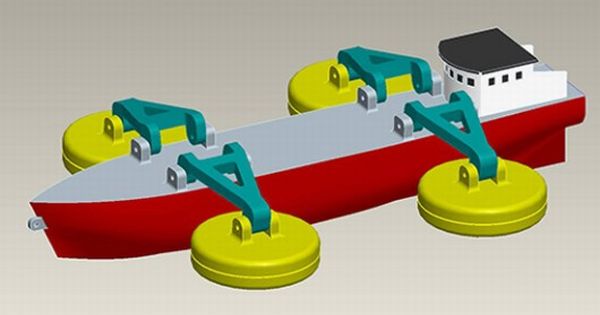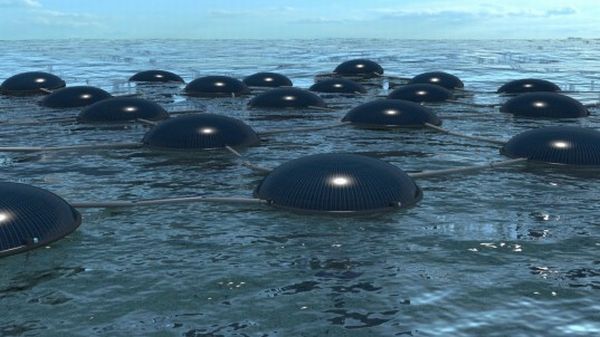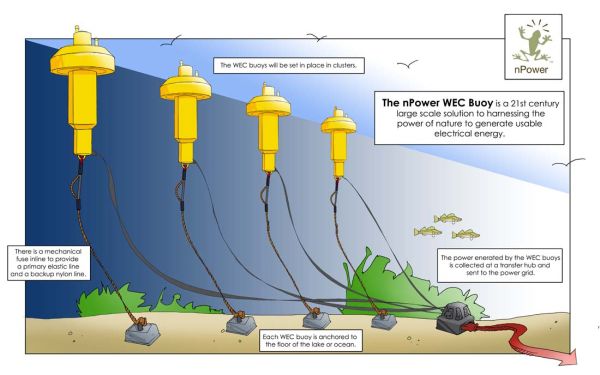With the need for energy growing all around the world, we have to explore newer and better sources of energy. One resource that has been largely untapped till now is the energy from sea and ocean waves. The best thing about this resource is that it is completely natural, green and nonpolluting. Wave energy could well turn out to be the next ‘wave’ of energy production ideas. Here are five innovative systems designed to harvest the power in waves.

Innovations
1. Fraunhofer system

The proposer: Andre Sharon from the Boston University
The system
Traditional wave harvesting systems are permanent structures at sea. Thus, they have to be built to withstand great stresses. Adopting the idea from fishing boats that go to the sea and return with a catch, the Fraunhofer system will return to port after harvesting power from the waves. Floating buoys suspended on arms by the hull of a 50-meter long ship bob up and down with the movement of the sea. This movement will be translated into electrical energy and stored in an onboard battery system. In case of a storm, all the appendages can simply be disconnected and stowed away safely.
The potential
The estimates say that this system could provide about 20 megawatt-hours of power at a cost of 15 cents per kilowatt-hour which is just 20% of the current costs.
2. Underwater kite turbines

The proposer: Designed by Swedish renewable energy company, Minesto, and designer Ander Jansson.
The system
This is again radical thinking. Instead of placing the energy-harvesting systems on the water’s surface, these 8-14 meters long, underwater kites promise to utilize the combination of the wind and waves. These kites have turbine blades that turn with the passing tides. Just like sailboats gather added momentum and speed by cutting across the winds, the kites’ swooping motion amplifies the speed of water up to tenfold. The kites have been built with neutral buoyancy to keep them floating and have covers to protect the turbines from fishes.
The potential
When deployed in waters of 50-300 meters depth, these kites promise between 150 and 800 kW of electricity, depending on location and size.
3. Floating marine solar cells

The proposer: Phil Pauley
The system
These hybrid generators utilize both the solar energy and energy from the waves. The buoys are embedded with photovoltaic surfaces that capture the solar energy and natural buoyancy displacement helps to capture the energy of the waves. Thus, it is different from energy farms that make use of only one source of energy.
The potential
This utilization of the natural lighting and natural buoyancy increases the energy captured by more than 20% compared to only one system being deployed at a time. Floating these buoys in the sea can also generate extra employment.
4. Oyster Machine

The proposer: Dr. Ronan Doherty, Chief Technical Officer of Aquamarine Power.
The system
Here is a gem of an innovation or shall we say a ‘pearl’ of an innovation? The Oyster is a giant machine, shaped like the oyster which will rest on the ocean floor and seabeds. Using hydraulic technology, it transfers wave power to the shore where it gets converted to electricity. An 18-meter wide oscillator is fitted with pistons. It gets activated by waves and pumps water through a subsea pipeline. This water is used for generating electricity.
The potential
According to preliminary studies, 10 Oysters could supply for the needs of 3000 homes. The ‘green’ nature of the generator ensures almost 500 tones of carbon saving annually. And since it makes use of only water, there is no toxicity or chemicals involved.
5. nPower WEC Buoy

The proposer: A Cleveland-based company
The system
This is similar to the mechanism of the underwater kites. Only that, these buoys are anchored to the bottom of the water body and the buoys float on the surface. The bobbing motion generates electricity through the turbines. The buoys will be used in clusters and can be placed even in lakes.
The potential
The generator is rumored to be commercially viable. According to the Founder and CEO, Aaron LeMieux, the generator cluster competes with coal-based electricity generators in potential. The electricity will be very cheap and will cost only about 5 to 7 cents per kilowatt hour.
Limitations of wave power
The foremost limitation when it comes to wave power is the cost involved. The manufacturing and setup costs of the installations needed to generate electricity from the waves, be it below the water or on the surface of water, are prohibitive. Another challenge would be to ensure that the gadgets, generators and equipment stay rust free and corrosion free. Being exposed to salt water, the chances of damage are extremely high. They will also need to be built to withstand storms and harsh weather. Fresh water installations in lakes may not be subjected to extreme corrosion but these will require necessary permissions before installation. Again, some systems may be viable only in areas like the NW coast of the US and the coastlines of South Africa, Chile and Australia. Otherwise, the costs may overwhelm the benefits.




